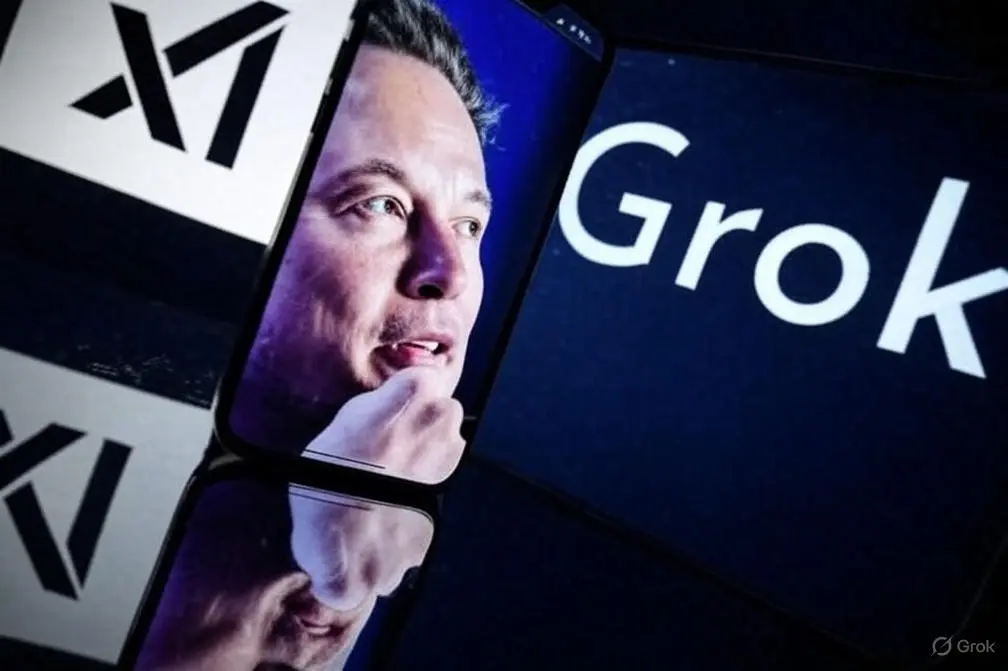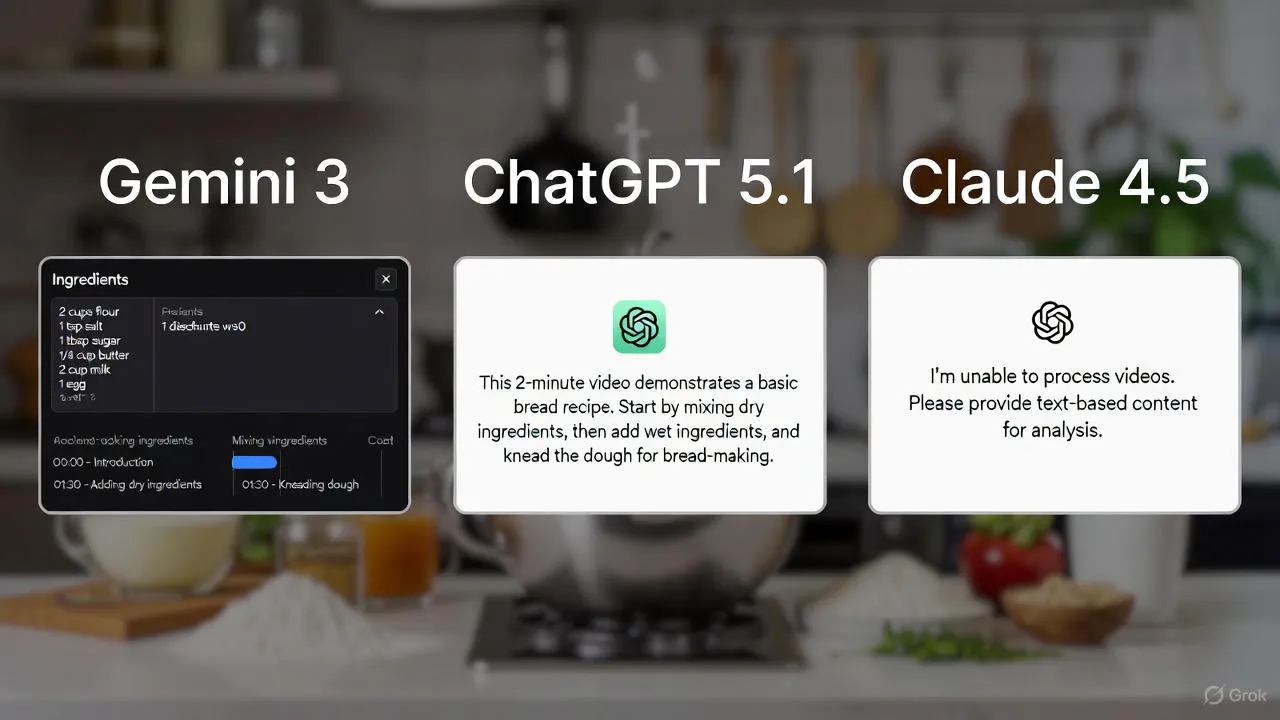NVIDIA Blackwell Ultra & the AI GPU Supply Crunch

Author: Boxu Li
NVIDIA’s latest Blackwell Ultra GPU platform has taken the AI world by storm – so much so that it’s causing a serious supply crunch. Wall Street analysts and AI researchers on social media have been buzzing about record-breaking performance, soaring prices, and unprecedented demand for these chips. In this deep dive, we’ll explore why Blackwell Ultra is viral news, examine its performance-per-watt and memory bandwidth breakthroughs, discuss the cluster economics of deploying these GPUs at scale, and consider why the frenzy is sparking a rethinking of lightweight AI frameworks. Throughout, we’ll back up facts with credible sources and focus on the tech details for a savvy audience.
Why Blackwell Ultra is Making Headlines
Unmatched Performance: NVIDIA’s Blackwell Ultra GPUs deliver a massive leap in AI inference capability. Early benchmarks show 7.5× higher low-precision throughput than the previous-gen Hopper H100 GPUs[1]. In fact, Blackwell Ultra can perform dense 4-bit precision math (NVFP4 format) at 15 PFLOPS, versus about 2 PFLOPS on an H100 (FP8) – a 7.5× increase in raw throughput[1]. This jump translates into dramatically faster AI model inference. For example, NVIDIA reports that a Blackwell Ultra–based system achieves a 50× overall increase in AI “factory” output (throughput of responses) compared to a Hopper-based platform, thanks to around 10× higher per-user responsiveness and 5× higher throughput per megawatt of power[2]. In other words, Blackwell Ultra doesn’t just add brute force – it does so much more efficiently, yielding 5× more performance per watt in large-scale deployments[2].
New Inference Capabilities: Blackwell Ultra introduces a new 4-bit precision format called NVFP4 that enables extreme inference speeds without sacrificing much accuracy. This format uses clever two-level scaling to preserve accuracy, achieving nearly FP8-level quality with far less memory and compute cost[3]. The result is that Blackwell Ultra’s Tensor Cores can crank through low-precision calculations at levels previously impossible – 1.5× the FP4 throughput of standard Blackwell GPUs, and many times faster than earlier architectures[1]. NVIDIA also doubled the special function unit throughput for key transformer attention operations, so attention layers run up to 2× faster than on base Blackwell chips[4]. These advances target the core bottlenecks of large language models and generative AI inference, enabling things like real-time generative video. In fact, one demo showed Blackwell Ultra generating a 5-second AI video 30× faster than Hopper GPUs could, turning a 90-second job into real-time output[5].
Wall Street and Twitter Hype: Such performance gains have not gone unnoticed. NVIDIA’s stock has surged on expectations of record revenues fueled by Blackwell. In Q3 2025, data-center revenue hit $51.2 billion (90% of NVIDIA’s sales), largely thanks to Blackwell Ultra ramping up – which the company says is now its “leading architecture across all customer categories”[6][7]. CEO Jensen Huang noted that “Blackwell sales are off the charts, and cloud GPUs are sold out”, with demand far exceeding supply[8]. AI labs and cloud providers are racing to get these chips, and social media is filled with anecdotes of extreme backorders and secondary market markups. This scarcity-fueled frenzy is driving up prices and making Blackwell Ultra a trending topic in both tech and finance circles.
Blackwell Ultra Architecture: Performance at Scale
Figure: Low-precision AI throughput has skyrocketed with Blackwell Ultra. Each Blackwell Ultra GPU delivers 15 PFLOPS of dense 4-bit AI compute, a 1.5× boost over an already powerful Blackwell chip, and about 7.5× the FP8 throughput of NVIDIA’s prior Hopper generation (H100/H200)[1]. This huge generational leap in compute power is a key driver of the current AI infrastructure boom.
At the heart of Blackwell Ultra is a cutting-edge design built specifically for AI inference at scale. Each GPU actually consists of dual GPU dies on one package, linked by a 10 TB/s high-bandwidth interconnect[9]. This multi-die approach (akin to chiplet architectures) allows NVIDIA to pack an enormous amount of processing capability into one “GPU.” The full Blackwell Ultra chip has 160 Streaming Multiprocessors (SMs) split across 8 GPC clusters, for a total of 640 fifth-gen Tensor Cores per GPU[10][11]. Those Tensor Cores are the workhorses of AI, and in Blackwell Ultra they’re optimized for FP8, FP6, and the new NVFP4 precisions. Each SM also includes 256 KB of “Tensor Memory” (TMEM) on-chip, a small high-speed scratchpad that lets the GPU reuse data for matrix calculations more efficiently[12][13]. This SM-level memory, along with new dual-block processing modes, helps reduce off-chip memory traffic and keep the Tensor Cores fed, improving effective throughput and power efficiency[13].
HBM3e Memory – Massive and Fast: Feeding data to these compute units is a huge pool of memory. Blackwell Ultra GPUs come with 288 GB of HBM3e high-bandwidth memory each[14]. That’s 1.5× more memory than the standard Blackwell data center GPU (which has ~192 GB)[15], and over 3.5× the memory of a Hopper H100 (80 GB). This matters because today’s large language models and other AI workloads often demand enormous context lengths and model sizes. The larger memory allows bigger batch sizes and longer sequences to be processed in one go, improving throughput for complex models[16]. The memory bandwidth is equally impressive – on the order of 8 TB/s per GPU (thanks to 12 stacks of HBM3e)[14]. For comparison, an H100 SXM module delivered about 3 TB/s[17], and even the interim H200 upgrade with HBM3e capped at ~4.8 TB/s[18][19]. With Blackwell Ultra, the memory subsystem is no longer the bottleneck for many workloads: models can be larger, or accessed more efficiently, without constantly thrashing external memory.
Grace Hopper to Grace Blackwell: NVIDIA’s design also tightly integrates CPUs and networking with the GPUs for better cluster-scale performance. Each Blackwell Ultra “node” pairs the GPUs with NVIDIA’s Grace CPUs over ultra-fast NVLink-C2C links (900 GB/s CPU–GPU bandwidth)[14]. The Grace CPU brings 2,592 Arm cores and high memory bandwidth of its own (LPDDR5X) to feed the GPUs[20][21]. This combo, sometimes called Grace Blackwell, ensures the GPU compute isn’t starved by CPU or I/O limitations. In fact, an NVIDIA GB300 system (detailed below) has 36 Grace CPUs working alongside the 72 GPUs in each rack, all connected via 5th-gen NVLink at a staggering 130 TB/s of all-to-all bandwidth[22][20]. This fabric, plus NVIDIA’s Quantum X InfiniBand or Spectrum-X Ethernet between nodes, means even multi-rack “AI factories” can operate with fast inter-GPU communication. The end goal is to scale up AI inference like a cloud service – which NVIDIA terms the AI Factory concept – where many models and requests run in parallel across a meshed cluster of accelerators.
Performance per Watt: Efficiency Gains
One of the most remarkable aspects of Blackwell Ultra is how much it improves energy efficiency for AI workloads. Yes, each GPU draws a lot of power (we’ll discuss the high TDP in a moment), but the performance-per-watt has risen significantly compared to prior generations. NVIDIA’s own metrics indicate that at large scale, Blackwell Ultra systems deliver 5× the throughput per megawatt of power compared to Hopper-based systems[2]. This is due to several factors working in tandem:
- Lower Precision = Lower Energy: By using 4-bit precision with minimal accuracy loss, Blackwell Ultra can do the same inference work with far fewer joules spent per calculation. The NVFP4 format was explicitly designed to improve efficiency – reducing memory movement and using smaller multipliers – so much that cutting precision from FP8 to FP4 actually improves performance per watt substantially[23]. In essence, each GPU can execute many more operations for the same power budget when they’re low-precision ops, which is a big win for inference serving.
- Architectural Optimizations: The tensor memory and dual-block cooperation in the SMs mean better utilization of each watt. Data is kept on-chip, avoiding expensive DRAM accesses, and the Tensor Cores are kept busy with fewer stalls[13]. Also, doubling crucial paths in the attention units (SFUs) allows those units to complete work faster and then idle, rather than dragging out full-power computations[4]. All this translates to less energy waste on memory waits or on long sequences of operations.
- Process Node and Clock Management: Blackwell generation GPUs are manufactured on advanced TSMC 4N/4NP processes, and the Ultra variants likely push it to the limit. They can achieve higher clocks or more cores in the same power envelope. According to some analyses, the base Blackwell (sometimes referred to as B200) already provided a major bump in perf/W over Hopper by moving to 4N silicon and architectural gains[24]. Blackwell Ultra then adds 50% more compute on top of that, albeit with a power increase – but netting a better ratio.
It’s worth noting that performance-per-watt improvements aren’t just academic; they directly impact operating cost for data centers. If you can get 5× the throughput for the same energy input, that’s a huge reduction in the cost per query or per inference. Given that many AI models are deployed at web scale (think millions of queries per day), these efficiency gains are essential for containing electricity and cooling costs. NVIDIA even provides an energy efficiency calculator for their GPUs[25], underscoring how important this metric has become to customers.
From another angle, AMD and other competitors are also touting perf-per-watt for AI, but as of late 2025 NVIDIA seems to have taken a leap ahead with Blackwell Ultra. For instance, the flagship AMD MI300X (a competitor GPU for AI inference) is still on 5nm-class tech and focuses on 8-bit and 16-bit operations; NVIDIA’s aggressive move to 4-bit inference with specialized hardware gives it a new edge in efficiency. This is partly why cloud providers are eager to invest in Blackwell Ultra despite the high upfront cost – the total cost of ownership improves when you can do more with less power over time.
Memory Bandwidth and Capacity Advantages
Large AI models are notoriously hungry for memory and bandwidth, and Blackwell Ultra squarely addresses this with its HBM3e memory architecture. As mentioned, each GPU carries 288 GB of HBM3e memory on board[14]. This is a massive amount of fast memory, even compared to recent GPUs like the H100 80GB or the interim H200 141GB which introduced HBM3e[18][19].
The immediate benefit of 288 GB per GPU is the ability to serve or fine-tune very large models in memory (like multi-hundred-billion parameter models or high-context LLMs) without partitioning the model across GPUs. Larger batch processing is also possible, which raises utilization. NVIDIA specifically notes that the 1.5× larger memory on Blackwell Ultra (vs. its predecessor) “boosts AI reasoning throughput for the largest context lengths.”[16] For AI applications like long document question-answering or lengthy conversations with an AI assistant, the GPU can handle more tokens at once, improving both speed and the quality of results.
Bandwidth is the other side of the coin. With 12 HBM stacks running in parallel, Blackwell Ultra’s memory subsystem is extremely wide. At peak, it can push on the order of ~8 TB/s of data[14]. This is an astronomical figure – by comparison, a high-end PC GPU with GDDR6 might have 0.5 TB/s, and even data center GPUs of the previous generation were in the 2–3 TB/s range[17]. What does this mean in practice? It means the GPU cores can be kept fed with data even in memory-heavy workloads. Neural networks often involve huge matrix multiplies (which the Tensor Cores handle) interspersed with memory-bound operations (like attention weightings, embedding lookups, etc.). With more bandwidth, those memory-bound steps speed up, so the overall workload sees less stalling. Blackwell Ultra’s design essentially balances its tremendous compute with equally formidable memory throughput, avoiding the scenario where the compute units are idle waiting for data.
To put it concretely, consider a transformer model generating a long sequence: the attention mechanism needs to read large key/value matrices from memory. On Hopper H100, this might have been a limiting factor for very long sequences, but on Blackwell Ultra with HBM3e, the GPU can pour those matrices in at double or more the rate. Combined with the 2× faster attention computation units, it achieves much higher sustained performance on tasks like GPT-style text generation with long context. NVIDIA’s “AI Factory” concept also means memory is aggregated at cluster scale – in a 72-GPU rack, that’s over 20 TB of GPU memory pooled, with total memory bandwidth in the hundreds of TB/s range available in the NVLink-connected domain[22][20]. This essentially lets an AI cluster behave like a single giant GPU with tens of terabytes of fast memory, an ideal scenario for serving many instances of large models concurrently.
Cluster Economics: Cost and Power at Scale
With performance and efficiency covered, we must address the practical side of deploying Blackwell Ultra: the cost and infrastructure required. These GPUs are usually sold as part of larger systems such as NVIDIA’s GB300 NVL72 rack or HGX B300 server blades. A single GB300 NVL72 unit integrates 72 Blackwell Ultra GPUs plus 36 Grace CPUs in a rack, complete with high-speed switches and cooling[26][20]. This is effectively an AI supercomputer in a box, and it does not come cheap. According to industry reports, NVIDIA is pricing a full GB300 NVL72 rack at around $3 million[27]. That works out to an average of $40,000 per GPU, which is in line with the rough list price of $30k–$40k that NVIDIA hinted at for individual Blackwell units[28]. (Notably, Jensen Huang has suggested they won’t sell just standalone chips or cards to end customers – they prefer to sell the entire integrated systems[28]. This bundling strategy drives up the upfront cost but ensures buyers get a complete, optimized solution.)
For anyone planning an AI cluster, the capital expenditure (CapEx) is enormous. Just one rack costs $3M, and many deployments involve multiple racks. CoreWeave, OpenAI, Meta, Microsoft – all the big players – are reportedly buying as many as they can. Those with less purchasing power (startups, academic labs) face inflated prices on the secondary market, where H100s previously were reselling at tens of thousands above MSRP due to scarcity, and we’re seeing a similar trend with Blackwell. In late 2024, H100 80GB cards went for $30k–$40k each in some cases when supply lagged demand[29]. Blackwell Ultra is following suit, effectively doubling down on the “AI gold rush” pricing. In short, only organizations with deep pockets or cloud credits can afford to play at this tier of hardware right now.
Power and Cooling Costs: Alongside the purchase price, the operational costs (OpEx) of running these clusters are significant. Each Blackwell Ultra GPU can draw up to ~1400 W at peak when fully utilized[15] – double or more the typical 700W TDP of an H100 SXM. In a 72-GPU rack, that means just the GPUs could consume around 100 kW of power (not counting overhead for CPUs, networking, etc.). Indeed, a fully loaded NVL72 cabinet with 18 GPU trays draws on the order of >100 kW and requires advanced cooling. NVIDIA opted for liquid-cooling in these systems, but even that has a cost: a recent analysis by Morgan Stanley pegged the bill of materials for the liquid cooling system at ~$50,000 per rack[30]. This includes custom cold plates, pumps, heat exchangers, etc. And as next-gen systems increase in power (rumor: the follow-on “Vera Rubin” generation might push 1.8kW per GPU), the cooling cost per rack is expected to rise to ~$56k[31][32].
In other words, on top of $3M in silicon, you might spend tens of thousands on plumbing and heat management. Plus the electricity bill: 100 kW running 24/7 is about 2.4 MWh per day. At commercial data center rates, that could be on the order of $200–$400 per day in power cost per rack (over $100k per year), not including cooling and infrastructure overhead. Clearly, operating an AI supercluster is not for the faint of heart or budget.
However, here’s where cluster economics justify themselves: throughput and TCO. If one Blackwell Ultra rack delivers, say, 50× the output of a previous-gen rack (as NVIDIA suggests for certain workloads)[2], then a data center might need fewer total racks (and thus less total power/cooling) to achieve a target workload. The increased efficiency means that per query, the cost in energy can actually be lower despite the higher absolute power draw, because each GPU is serving far more queries in parallel. For cloud providers that rent GPU time, this potentially means they can offer more performance to customers for the same cost, or pocket better margins. A Medium analysis posited that if Blackwell GPUs provide much more performance for roughly the same rental price as H100s, cloud cost per AI compute (per TFLOP-hour) will drop, at least once supply catches up[33]. That could democratize access to big models if prices normalize. Of course, in the short term, supply constraints mean rental prices are staying high – many cloud GPU instances are expensive or waitlisted because everyone wants this new hardware.
In summary, the economics of Blackwell Ultra at cluster scale involve huge upfront investments but promise significant long-term efficiency and capability gains. Companies that can secure these systems early gain a competitive edge in AI model development and deployment – which is exactly why the scramble to buy GPUs has been likened to an “arms race.” It’s also why NVIDIA’s data center revenue exploded 66% YoY in that quarter[34]: virtually every major tech firm and AI startup is pouring capital into GPU infrastructure, even if it means tolerating high prices and delayed deliveries.
The Supply Crunch: Scarcity and “H300” Rumors
All this leads to the supply crunch that underpins the viral buzz. Simply put, demand far outstrips supply for NVIDIA’s AI accelerators right now. NVIDIA’s CFO Colette Kress noted on a recent earnings call that “the clouds are sold out” – major cloud providers have fully booked their GPU capacity – and even previous-gen GPUs like H100 and Ampere A100 are “fully utilized” across the installed base[35]. NVIDIA acknowledged that it is supply-constrained and that it’s ramping production as fast as possible (with expectations of significant increase by 2H 2024)[36]. Jensen Huang, during a trip to TSMC in Taiwan, said he asked their foundry for as many wafers as possible to meet “very strong demand” for Blackwell chips[37][38]. TSMC’s CEO even nicknamed Jensen the “five-trillion-dollar man” as NVIDIA’s market cap hit $5 trillion on optimism around AI[39]. In short, NVIDIA is selling every chip they can make, and pushing partners to accelerate production – but it still isn’t enough in the near term.
Several factors contribute to the bottleneck:
- Complex Supply Chain: These are not just GPUs; NVIDIA now sells entire systems (with GPUs, CPUs, networking, coolers, etc.). A report from Taiwan indicated that some components – especially for the liquid cooling systems in the new GB200 (Blackwell) servers – have shortages[40]. Taiwanese suppliers like Foxconn and Wistron reportedly hit roadblocks on things like pumps or cold plate materials[41]. NVIDIA’s decision to go all-in on liquid-cooled designs added new supply chain dependencies[42]. The Bank of America survey cited in that report suggested NVIDIA might divert some orders to slightly older Hopper-based systems (like an air-cooled H200 HGX) if Blackwell systems were delayed[43]. So far, NVIDIA managed to launch Blackwell Ultra on time in 2025, but initial units were likely allocated to a few key customers (think Meta, Microsoft)[44]. Smaller buyers are waiting in line.
- Capacity at TSMC: Blackwell GPUs are fabbed on TSMC’s 3nm-class process (4N is a customized 5nm derivative for earlier ones; the newest might be 3nm for “Ultra”). TSMC’s leading-edge capacity is finite and largely booked by both NVIDIA and other giants like Apple. NVIDIA reportedly boosted its wafer orders by 50% for 2024–2025 to secure more supply[45]. Even so, lead times for chips can be many months. Indeed, some analysts claim NVIDIA has pre-booked so much TSMC capacity through 2026 that rival AMD will struggle to get a foothold in AI accelerators[46][47]. This dominance ensures NVIDIA can increase supply in the long run, but in the short term it also means no quick relief – the fabs are running at full tilt, yet every AI company wants GPUs “yesterday.”
- Export Restrictions: An external factor is US export limits on selling top AI chips to China. NVIDIA cannot sell H100 or Blackwell top-bin chips to China due to government controls[48]. One might think that leaves more supply for the rest of the world, but NVIDIA created slightly nerfed variants (like H100 “CN” models) for China which still consume some production capacity. Also, Chinese demand for AI compute is massive, and if they can’t get the latest NVIDIA chips, they may buy up older ones, indirectly keeping the pressure on global supply. In any case, Western demand alone is enough to consume all current output, and the China restrictions add complexity to how NVIDIA allocates its inventory.
The mention of “H300” in the discussion likely refers to the next major GPU upgrade on the horizon. NVIDIA’s roadmap after Blackwell is rumored to be code-named Vera Rubin (after the astronomer) – some enthusiasts have informally dubbed this hypothetical future series “H300” in keeping with the Hopper naming style. While Blackwell Ultra is here now, companies are already speculating about what comes next. For instance, imagine around 2027, NVIDIA might release another leap, e.g. an “H300” GPU built on a 3nm or 2nm process, maybe 10–15% more efficient than Blackwell Ultra (as a Reddit commenter mused)[49][50]. Will that immediately alleviate the crunch? Unlikely. Most big players will still be digesting their Blackwell deployments by then; they won’t scrap $ billions of hardware overnight for a marginal gain[49][50]. So even if an “H300” or Rubin GPU appears, demand will continue to outpace supply for the foreseeable future because AI adoption is still accelerating across industries. As one analyst put it, NVIDIA has entered a “virtuous cycle of AI” – more usage drives more demand for compute, which enables more applications, and so on[8].
In practical terms, Jensen Huang’s guidance is that supply will remain tight through next year. Memory manufacturers like SK Hynix have already sold out their HBM production through next year due to the AI boom[51][52]. NVIDIA’s own forecast for Q4 is $65 billion revenue – another jump – which assumes they can ship every Blackwell they can make[53]. So, the “supply crunch” isn’t ending immediately; if anything, prices will stay high and GPUs will be allocation-bound well into 2025. We may not see relief until possibly when second-tier cloud providers or smaller firms decide the cost is too high and pause orders – but right now, everyone is in land-grab mode for AI compute. NVIDIA’s strategy of selling full systems also means if you want these GPUs, you often have to buy entire expensive servers or even entire pods, which further concentrates who can obtain them.
The Case for Efficiency: Lighter AI Frameworks (Macaron’s Angle)
With such daunting costs and supply limits for cutting-edge AI hardware, it’s worth considering how the software and architecture side might adapt. One intriguing angle is the argument for lightweight agent frameworks – essentially, designing AI systems that rely on multiple specialized, smaller models or “agents” working together rather than one giant monolithic model that demands a super-GPU. This is where approaches like Macaron come in, advocating for more efficient, memory-savvy AI agents.
Why might this be a good fit now? Because if compute is the new oil, then maximizing what you can do with a given amount of compute is paramount. Blackwell Ultra gives a huge boost, but not everyone can get those GPUs. Even those who can will want to use them as efficiently as possible. Lightweight AI agents are about being clever with compute: - They can be designed to handle tasks in a modular way, spinning up only the necessary model for a sub-task, rather than running a massive model end-to-end for every query. - They often utilize techniques like retrieval (pulling in relevant context only when needed) or caching results, which cut down on redundant computation. - Smaller models can often be run on cheaper or more readily available hardware (even older GPUs or CPUs), which is a big advantage when top-tier GPUs are scarce or ultra-expensive.
For example, instead of a single 175B parameter model doing everything, you might have a collection of 10 smaller models (say 5B to 20B each) each fine-tuned for specific domains (one for coding, one for math, one for dialogue, etc.), coordinated by an agent framework. These could collectively use far less memory and compute for a given query, because the agent intelligently routes the query to the right expertise. This kind of approach can be more cost-effective to run – especially if your hardware resources are limited. It’s akin to microservices in cloud computing: use the right small service for the job, instead of one giant application handling all tasks inefficiently.
Projects like Macaron AI have been exploring deeper memory and agentic architectures where an AI system composes solutions by calling on different skills or knowledge bases (somewhat how humans might consult a specialist for a specific question). In a world where not everyone has a Blackwell Ultra cluster, such designs could allow more people to do advanced AI tasks on moderate hardware. It’s a pragmatic response to the current hardware bottleneck.
Additionally, even at the high end, efficiency is good for business. The hyperscalers buying Blackwell Ultra en masse are also investing in software optimizations – from better compilers to distributed frameworks – to squeeze maximum throughput out of each GPU hour (since at $40k a pop, every bit of utilization counts). A lightweight agent framework that can, say, reduce the context length fed to a big model by pre-processing queries (thus saving compute), or that can offload some logic to cheaper machines, will directly save money. We see hints of this in emerging systems where a large model is augmented by smaller tools or a database; the large model is only invoked when absolutely needed. That philosophy aligns well with Macaron’s argument for not using an AI hammer for every nail, but rather a toolkit of hammers and scalpels.
In summary, the Macaron fit here is about recognizing that while NVIDIA’s latest and greatest enable incredible feats, the industry also needs to make AI accessible and sustainable. Pushing solely for ever-larger models on ever-more-expensive hardware has diminishing returns for many applications. There is an opportunity (and arguably a need) for innovation in how we architect AI solutions to be lighter, more modular, and less resource-intensive. This doesn’t mean we stop pursuing powerful GPUs or large models; rather, we use them more judiciously. The current supply crunch and cost explosion are forcing that conversation. It’s likely we’ll see more hybrid approaches: for instance, an AI service might use Blackwell Ultra GPUs for the heavy lifting of model inference, but only after a lightweight front-end system has distilled the request, retrieved relevant data, and determined that the big model truly needs to be run. That way, the expensive GPU cycles are spent only when necessary, improving overall throughput per dollar.
Conclusion
The advent of NVIDIA’s Blackwell Ultra GPUs marks a watershed moment in AI infrastructure – delivering jaw-dropping performance improvements in AI reasoning and inference, but also highlighting the new challenges of success: supply shortages, soaring costs, and the ever-growing appetite for computational power. We’ve seen how Blackwell Ultra significantly boosts performance (especially at low precision) and efficiency (performance per watt), enabling leaps like 50× higher AI output and real-time generative media that were out of reach just a year ago[54][5]. Its beefy HBM3e memory and advanced architecture remove bottlenecks, but at the same time, the sheer scale and power draw of these systems introduce logistical and economic hurdles – from $3M price tags to 100kW racks that need specialized cooling.
The “AI GPU supply crunch” is a real and present issue: essentially all of NVIDIA’s production is spoken for, and “sold out” has become the norm[8]. This scarcity, with GPUs commanding $30k+ prices, has both investors and practitioners hyper-focused on how to best utilize what hardware we have. It underscores an important point: for the wider industry, it’s not sustainable to rely solely on brute-force scale. This is why efficiency – whether through better hardware like Blackwell Ultra or smarter software like lightweight agent frameworks – is the name of the game moving forward.
In the near term, NVIDIA’s Blackwell Ultra will continue to dominate headlines and deployment plans, and we can expect the feeding frenzy for these GPUs to persist until supply catches up (which might not be until the next architecture hits and fabs expand). For organizations building AI capability, the takeaway is twofold: if you can get cutting-edge hardware, it will give you an edge, but you also need to architect your AI stack intelligently to make the most of every FLOP. That might mean mixing in smaller models, optimizing code for new precisions, or investing in data management – anything to avoid wasted computation, which in this context is wasted money.
As we look ahead, the trajectory of AI hardware suggests even greater performance (the hypothetical “H300” and the upcoming Rubin generation) and likely continued high demand. So, the industry’s challenge will be balancing this incredible capability with accessibility. Efficiency, scalability, and innovation at the software level will be key to ensure that the AI revolution powered by GPUs like Blackwell Ultra is one that a broad range of players can participate in – not just those with the deepest pockets or the biggest data centers. In short, NVIDIA’s latest marvel has opened new frontiers, but it also reminds us that in AI (as in computing at large), smart resource use is just as important as raw horsepower.
Sources: NVIDIA product and technical documentation[54][1][16], industry news reports[8][43], and expert analyses[28][27] detailing Blackwell Ultra’s performance, supply chain, and impact on AI economics.
[1] [3] [4] [9] [10] [11] [12] [13] [14] Inside NVIDIA Blackwell Ultra: The Chip Powering the AI Factory Era | NVIDIA Technical Blog
[2] [5] [16] [20] [21] [22] [25] [26] [54] Designed for AI Reasoning Performance & Efficiency | NVIDIA GB300 NVL72
https://www.nvidia.com/en-us/data-center/gb300-nvl72/
[6] [7] [34] [35] Nvidia: Blackwell Ultra Takes Lead In Driving 62 Percent Growth To Record Revenue
[8] [53] Nvidia's revenue skyrockets to record $57 billion per quarter — all GPUs are sold out | Tom's Hardware
[15] Super Micro Computer, Inc. - Supermicro Begins Volume Shipments of NVIDIA Blackwell Ultra Systems and Rack Plug-and-Play Data Center-Scale Solutions
[17] NVIDIA Hopper Architecture In-Depth | NVIDIA Technical Blog
https://developer.nvidia.com/blog/nvidia-hopper-architecture-in-depth/
http://www.hyperscalers.com/NVIDIA-H200-DGX-HGX-141GB
[23] Introducing NVFP4 for Efficient and Accurate Low-Precision Inference
[24] NVIDIA Blackwell vs. Blackwell Ultra B300: Should You Buy or Wait?
https://www.trgdatacenters.com/resource/nvidia-blackwell-vs-blackwell-ultra-b300-comparison/
[27] [46] [47] NVIDIA expected to ship 5.2M Blackwell GPUs in 2025, 1.8M in 2026, and 5.7M Rubin GPUs in 2026 : r/AMD_Stock
https://www.reddit.com/r/AMD_Stock/comments/1lovdwf/nvidia_expected_to_ship_52m_blackwell_gpus_in/
[28] [29] [33] Blackwell GPUs and the New Economics of Cloud AI Pricing | by elongated_musk | Medium
[30] [31] [32] Cooling system for a single Nvidia Blackwell Ultra NVL72 rack costs a staggering $50,000 — set to increase to $56,000 with next-generation NVL144 racks | Tom's Hardware
[36] [40] [41] [42] [43] [44] NVIDIA Blackwell AI Servers Exposed To "Component Shortage", Limited Supply Expected In Q4 2024
https://wccftech.com/nvidia-blackwell-ai-servers-component-shortage-limited-supply-expected-q4-2024/
[37] [38] [39] [48] [51] [52] Nvidia CEO Huang sees strong demand for Blackwell chips | Reuters
https://www.reuters.com/world/china/nvidia-ceo-huang-sees-strong-demand-blackwell-chips-2025-11-08/
[45] Nvidia boosts TSMC wafer order by 50% for Blackwell chips - LinkedIn
[49] [50] Sam Altman: "We’re out of GPUs. ChatGPT has been hitting a new high of users every day. We have to make these horrible trade-offs right now. We have better models, and we just can’t offer them because we don’t have the capacity. We have other kinds of new products and services we’d love to offer." : r/accelerate
https://www.reddit.com/r/accelerate/comments/1ms9rrl/sam_altman_were_out_of_gpus_chatgpt_has_been/












